Case study research is a type of qualitative research that helps understand an individual case or a specific situation in detail.
Case study researchers focus on an in-depth understanding of the research topic by exploring an individual case or a specific situation in detail. Researchers document findings as case studies and present them with the help of visuals such as screenshots, images, and tables.
A case study can be written as a final report or it can be presented as an article in a journal or conference proceedings. Before you begin your next case study, you must know about its scope and limitations.
This article will help you get started with your next case study project by providing useful tips and information about this type of qualitative research.
What is a Case Study?
A case study is a type of qualitative research that examines one particular case (or several cases) in-depth.
Case studies concentrate on gathering data about a particular object, event, or activity, like a certain business unit or organization. The person, group, organization, event, or circumstance that the researcher is interested in is the case in a case study.

A case study is designed to demonstrate how different angles and points of view can be used to evaluate a real-world event in order to gain a clear understanding of an issue. In keeping with this, a case study may be defined as a research strategy that entails an empirical investigation of a specific current event within its real-life setting employing a variety of data gathering techniques.

It is often used for exploring a single phenomenon such as:
- Successful marketing campaign
- A product
- A service
Most importantly, a case study helps you understand the reasons for the occurrence or failure of a specific event. Case studies are common in business and management research. They can be qualitative or quantitative in nature. Researchers explore a single case, typically a business-related event or experiment.
They collect data through a variety of methods, such as
- Interviews
- Document analysis
- Observation
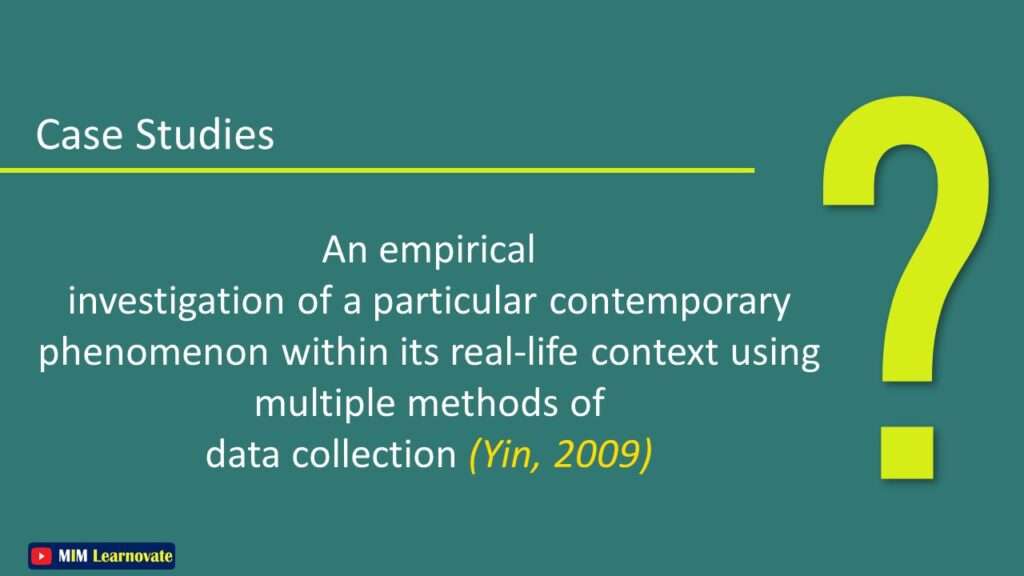

Case studies may offer both qualitative and quantitative data for analysis and interpretation. Hypotheses can be developed in case studies just like in experimental research. However, no support can be demonstrated for the alternative hypothesis developed if a specific hypothesis has not been supported in even one more case study.
Researchers document findings as case studies and present them with the help of visuals such as
- Screenshots
- Images
- Tables
A case study can be written as a final report or it can be presented as an article in a journal or conference proceedings.
Case Study- Example
How can teachers employ active learning practices in classrooms with mixed ability levels can be our research question.
This might be stated as a case study of a nearby school that encourages active learning.
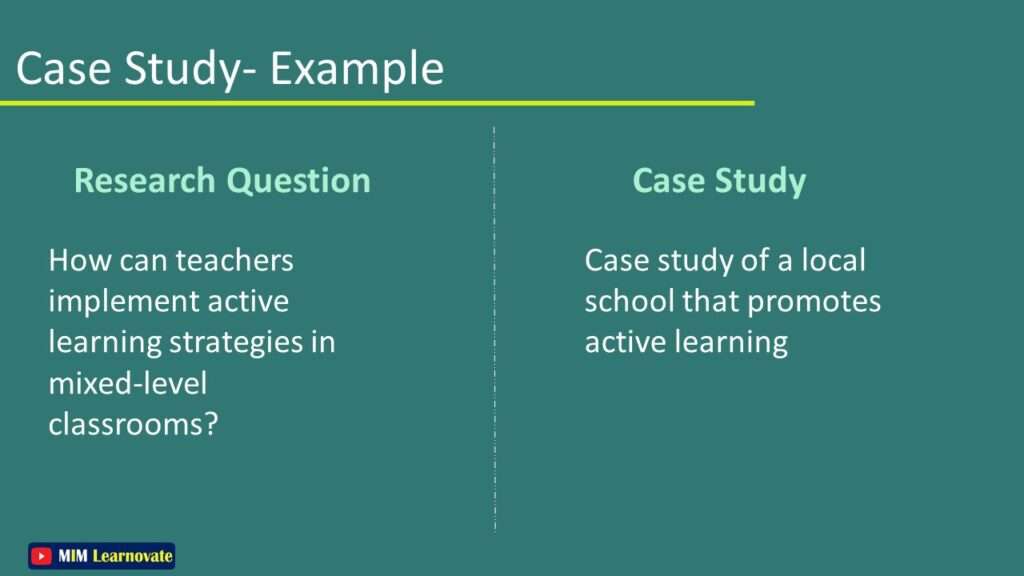
When to do a case study?
- In a thesis or dissertation, case studies are frequently a wise choice.
- When you don’t have the time or resources to conduct extensive research, they help keep your project focused and manageable.
- To compare and shed light on various facets of your research problem, you might perform several case studies or just one complicated case study where you thoroughly examine a single subject.
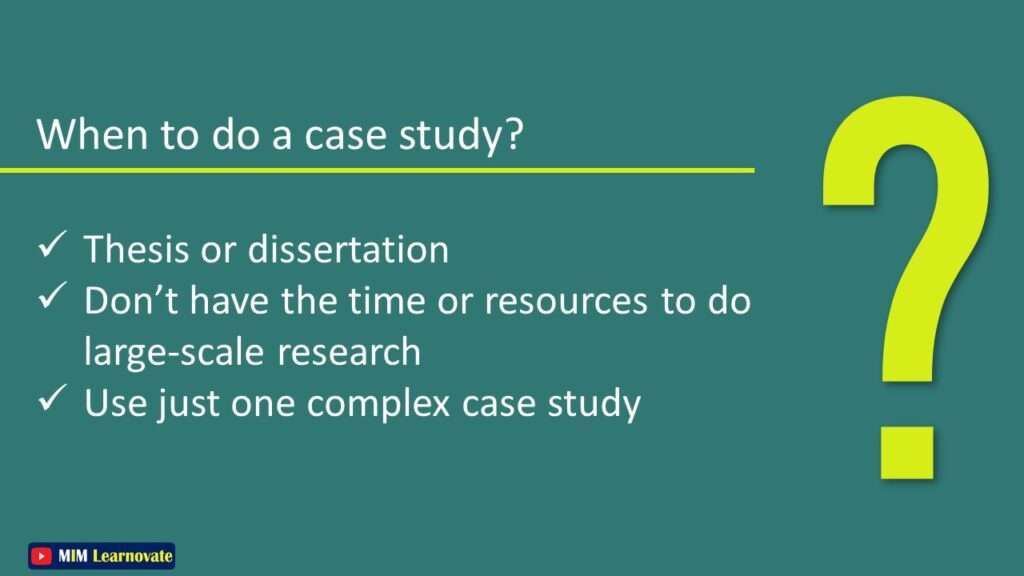
Step by step guide for conducting case study research
Define the problem
Select a research topic and problem statement that you wish to solve using a case study.
Create a research plan
Before you begin with your case study, make sure you have a research plan. A research plan will help you outline your case study and make sure you don’t miss any important steps.
Conduct field research
Once you have a research plan, start your field research. You can use a variety of methods to conduct field research in a case study. You can use observation, interviews, or document analysis to collect data related to your case study.
Analyze data
Once you have collected data for your case study, it’s time to analyze it and make sense of it. You can use qualitative analysis methods to transform data into meaningful insights.
Organize data
Once you have analyzed data and made sense of it, it’s time to organize it into something more readable and understandable. You can use graphs, diagrams, or tables to summarize data and make it easy to understand.
Present case findings
Once you have organized data and summarized it, it’s time to present your case findings. You can write a case study report or present it in the form of an article in a journal or conference proceedings.
Benefits of Case Study Research
A single-case study is necessary to fully understand a single occurrence and would entail gathering a variety of data kinds if a researcher wanted to investigate a specific phenomenon resulting from a distinct entity.
By comparing the similarities and differences of the individual examples, a multiple-case research study enables a deeper knowledge of the cases as a whole.

Multiple case studies are frequently more robust and trustworthy than single case studies. Studies with multiple cases enable the formation of theories and a more thorough investigation of research problems.
Here are the benefits of case study research
- A case study provides detailed information about the situation and the context in which it occurred.
- A case study allows you to explore the causes of particular events.
- It helps you explore different points of view of people associated with the case study.
- It helps you understand problems that people in your target audience face on a daily basis.
- It allows you to make inferences about the wider population from studying one case in detail.
- It helps you explore real-world problems and come up with practical solutions for them.
- A single-case study is necessary to fully understand a single occurrence and would entail gathering a variety of data kinds if a researcher wanted to investigate a specific phenomenon resulting from a distinct entity.
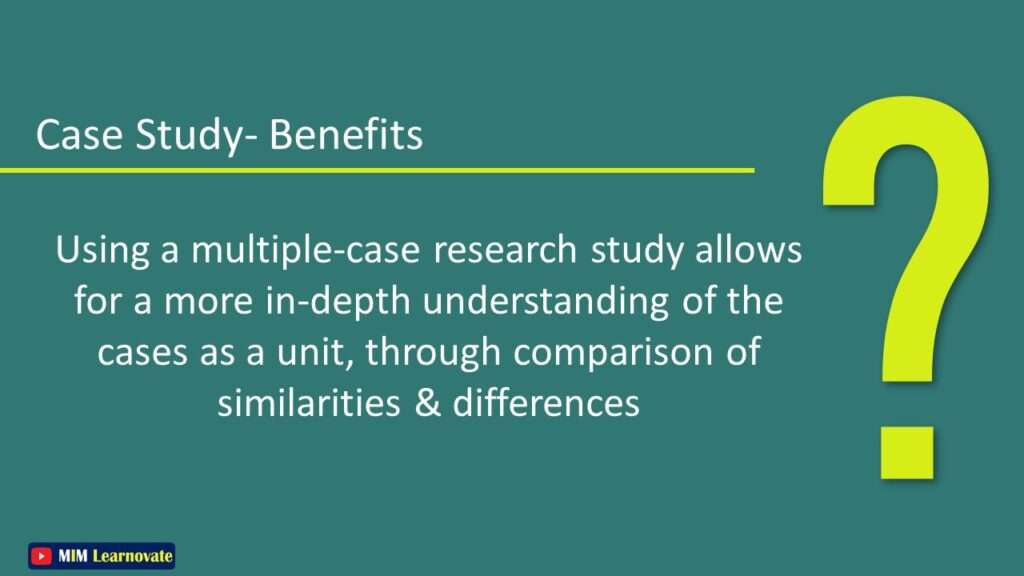
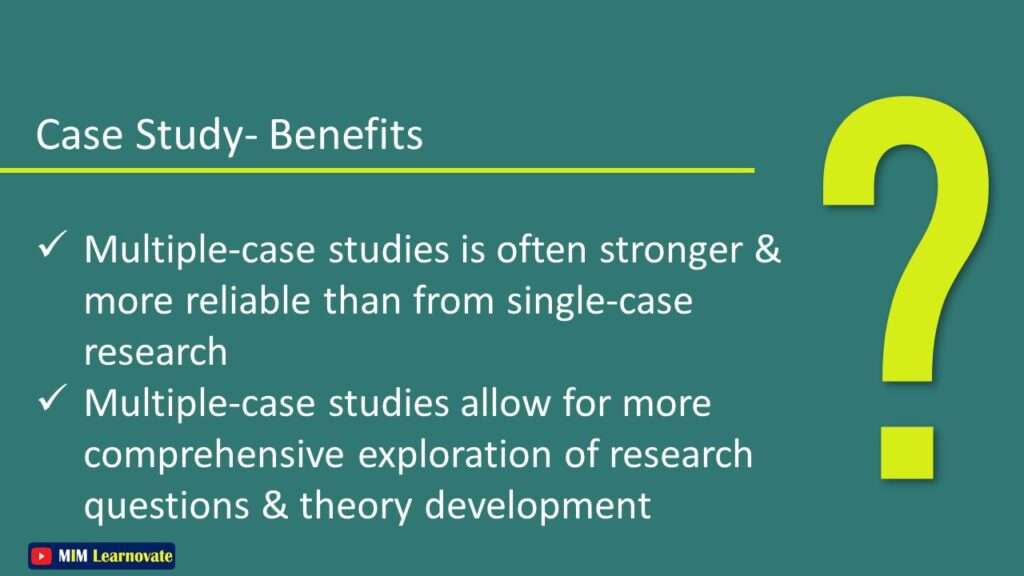
Limitations of Case Study Research
- A case study is not an appropriate research method when trying to generalize from one specific case to a wider population.
- It is difficult to generalize findings from a case study since every case is different.
- You can’t apply the insights from a single case study to other contexts.
- You can’t use the insights from a case study to make predictions about the future.
- You will have to be careful about using causal language in your case study report.
- You can’t make causal claims based on a single case study.
- You can’t draw generalized conclusions from a case study.
- Case study research is not appropriate when studying an extremely rare event.
- Since there is a lot of data to arrange, integration and data analysis methodologies should be carefully considered.
- Reporting results from multiple-case research studies can occasionally be difficult, especially given the word limits for some journal papers.
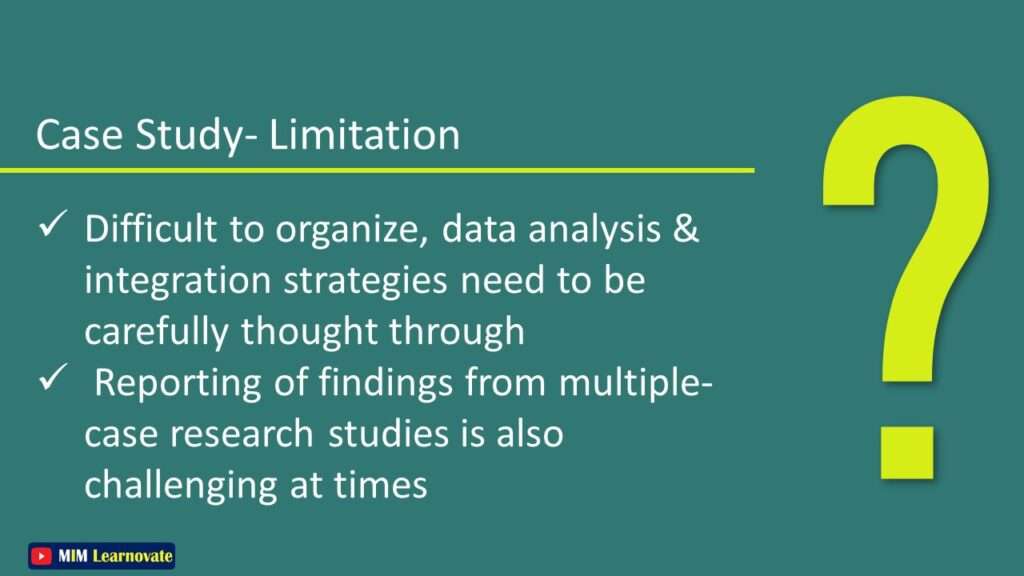
Bottom line
A case study is a type of qualitative research that examines one particular case (or several cases) in-depth. It is often used for exploring a single phenomenon or event, such as a successful marketing campaign, a product, or a service.
Case study researchers collect data through a variety of methods, such as interviews, document analysis, and observation. They then analyze this data, organize it, and present their findings in a case study report or article.
Other articles
Please read through some of our other articles with examples and explanations if you’d like to learn more about research methodology.
Statistics
Methodology
- Research Methods
- Quantitative Research
- Qualitative Research
- Case Study Research
- Survey Research
- Conclusive Research
- Descriptive Research
- Cross-Sectional Research
- Theoretical Framework
- Conceptual Framework
- Triangulation
- Grounded Theory
- Quasi-Experimental Design
- Mixed Method
- Correlational Research
- Randomized Controlled Trial
- Stratified Sampling
- Ethnography
- Ghost Authorship
- Secondary Data Collection
- Primary Data Collection
- Ex-Post-Facto
Research
- Table of Contents
- Dissertation Topic
- Synopsis
- Thesis Statement
- Research Proposal
- Research Questions
- Research Problem
- Research Gap
- Types of Research Gaps
- Variables
- Operationalization of Variables
- Literature Review
- Research Hypothesis
- Questionnaire
- Abstract
- Validity
- Reliability
- Measurement of Scale
- Sampling Techniques
- Acknowledgements




3 Comments
What’s Happening i’m new to this, I stumbled upon this I have found It positively useful and it has helped me out loads. I hope to contribute & help other users like its helped me. Great job.
Hello mimlearnovate.com webmaster, Thanks for the well-organized and comprehensive post!
To the mimlearnovate.com webmaster, Thanks for the well-structured and well-presented post!